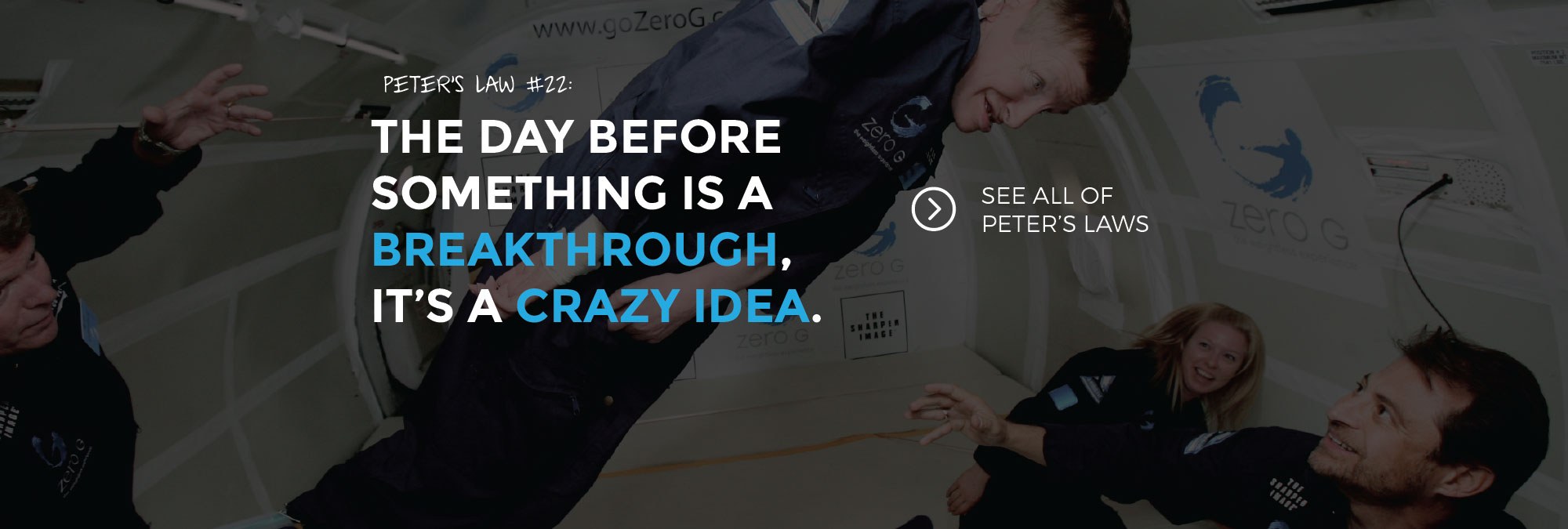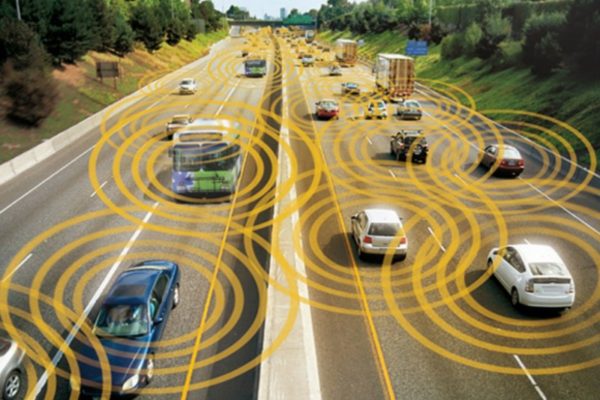I have just finished my first, of what I hope is many, Abundance 360 conferences in Los Angeles. Abundance 360 brings together a vast network of CEO’s and entrepreneurs to discuss the leading innovative technologies that will alter the business landscape over the next 2-3 years. The conference deals with a variety of new technologies from infinite computing to synthetic biology and 3D printing. Importantly, the conference attempts to foresee which technologies are moving from deceptive to disruptive, and how these technologies are going to converge to create new industries, as well as end old ones.
Abundance 360 is the brainchild of entrepreneur Peter Diamandis. Diamandis’ resume is impressive, to say the least. In 1996 he founded XPRIZE, offering $10 million to the first privately-funded team to build and fly a spacecraft 100 kilometres into space, twice in two weeks. Diamandis created XPRIZE to incentivise innovation, focussing on technology that can help change the world for the better. Another of Diamandis’ creations is Human Longevity (which I attended late last year), an organisation seeking to use whole genome sequencing to unlock the secrets of human ageing – a more comprehensive report on this topic coming soon. Diamandis also founded Singularity University, providing customised educational experiences to help solve humanity’s grand challenges, as well as Planetary Resources, a company that plans to mine resource-rich, near-earth orbiting asteroids. Pretty audacious stuff!
This annual note will attempt to summarise the most important implications for our investment team as well as our many clients who own and operate businesses in these exponentially advancing times. I’ve left my discussion about autonomous cars until the end – take a seat before you read that part.
Conference overview:
This year’s conference began with a discussion of the advancements of innovative technologies in different fields over the past year, attempting to gauge the speed of technological progress. Following this, we spent a session with Steve Jurvetson (hotmail.com seed investor) and Tony Robbins discussing what’s NOT going to change over the next 25 years. Whilst a seemingly odd question, it’s one of great importance. As put by Amazon founder Jeff Bezos, “when you have something that you know is true, even over the long term, you can afford to put a lot of energy into it.” Robbins highlighted that personalization won’t change and, more importantly, that primitive human emotion won’t change. Millions of years of evolution have programmed the human mind to treasure the feelings of companionship and love – a process not easily unwound. Robbins outlined six common human needs, noting that if a business can offer three or more their product or service becomes addictive! People need:
- Certainty
- Variety
- Feelings of significance
- Connection and love
- Growth
- Contribution
Jurvetson further added to the list the notion of legacy, culture, a sense of immortality, human empathy, desire for entertainment, the need to fuel the body, connection to nature, travel, public order and taxes (NB: death was not included).
We had an amazing session with Arianna Huffington, the CEO of GE Ventures Sue Seigel, and CMO of GE Beth Comstock. In summary, the central thematic focussed around the culture of success – the idea that to succeed, we must burn out. Arianna has started Thrive Global, a blogging website that I suggest everyone spends some time checking out.
Robotics:
Neil Jacobstein, the chair of AI and robotics at Singularity University, Matt Grob the CTO of Qualcomm, and Chad Rigetti of Rigetti Computing took us through how AI, 5G, sensors and quantum computing are almost here. The rollout of the Internet of Things is set to drastically accelerate with the proliferation of high-speed, 100MB networks. OneWeb, which boasts the likes of Richard Branson on its board, is seeking to bridge the digital divide by providing affordable internet access using its network of satellites. In terms of internet technology, 5G is set to provide a significant leap over its predecessor. Put simply, the difference between 5G and 4G is about 10x that of the difference between 4G and 3G. New technologies like The Pilot – an instant translator earpiece – represents a communications revolution. AI is going to have an enormous impact on employment. Perhaps less obviously, this impact will start to be seen in just the next two years. In something straight out of 2001: A Space Odyssey, one presentation showed an AI lip-reader that was 1.8x more accurate than its human counterparts! Marc Raibert of Boston Dynamics (now owned by Alphabet) showed us some of the gains being made in robotics. Although undeniably cool, there clearly needs to be some continued business model innovation to help bring these developments into everyday life.
Augmented reality:
Alex Kipman from Microsoft – a god in the mixed-reality world – gave us a demonstration of the Microsoft Hololens. This technology is already being trialled right now in test cases. Apple CEO Tim Cook predicts that the market for augmented reality will be 5x the market for virtual reality. The use cases for both AR and VR are far-reaching. Diamandis envisages a world in which smartphones are replaced by AR glasses which can upload to the user pertinent information in real-time based on the user’s conversation. In terms of VR, real-estate provides one of the more tantalising areas ripe to be revolutionised. The capacity of real-estate agents will be greatly improved, with a virtual tour of the property reducing the number of physical site visits dramatically.
Autonomous vehicles:
And finally, Jeff Holden from Uber (this is one to sit down for). Holden, who whilst at Amazon created Amazon Prime, is now Chief Product Officer at Uber. Holden spoke about Uber’s recent introduction of ride-pooling in San Francisco. This has drastically reduced the cost of a ride whilst also materially improving congestion. Currently, approximately 50 percent of Uber rides in San Francisco are pooled rides. In the first 7 months of 2016, Uber’s ride-pooling saved 312 million miles of driving, greater than the distance between Earth and Mars at aphelion (on opposite sides of the sun). Combine the reduced cost of ride-pooling with the elimination of driver wages provided by autonomous cars and the economics become ridiculous.
It took Holden only 673 days from his first phone call to a robotics company to Uber completing its first autonomous car ride. We have written extensively on the arrival of autonomous cars, predicting that they are coming quicker than even some of the most ambitious expectations. I have some friendly bets that give me four more years before I need to pick people up in an autonomous car and, after hearing Holden, I feeling pretty safe. Holden said he will have autonomous cars on the road WITH NO DRIVER WITHIN TWO YEARS. That’s fully autonomous cars within just two years!
He predicts that it will be 10x cheaper to use an autonomous Uber than it will to own your own car. Uber estimate that already, 10 percent of under 30-year-olds have given up on car ownership. But he didn’t stop there – Uber wrote a white paper last year on whether flying taxis are something they should pursue. Holden believes the world is just 10 years away from mass production of flying taxis with Airbus planning to demo a prototype later this year. Essentially, Uber is already working on disrupting its own autonomous car business model! Cool, right? The investment implications are enormous for autonomous cars ranging from auto insurance to auto dealers, taxis, parking stations, and even rural property prices (as commute times shrink).
So that is a taste of the innovative technologies I’ve been digesting over the last few weeks. To quote Diamandis, ‘there isn’t a more exciting time in history to be alive’.
All the best,
Josh Best
Chief investment Officer
KIS Capital





